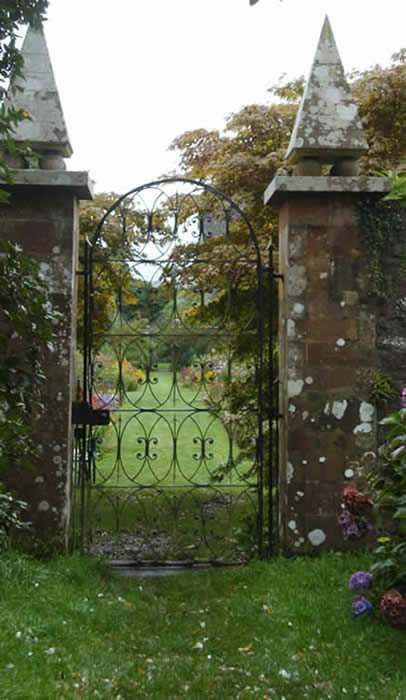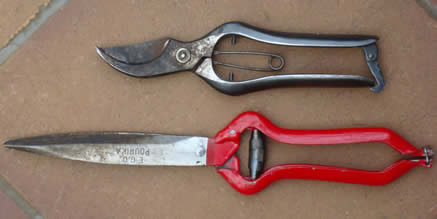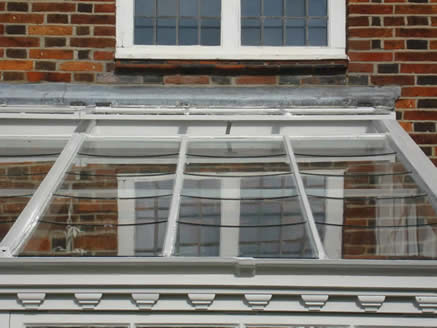The subtropical north
29 September 2008
Just home from a weekend in Wigtownshire. That’s the first time I’ve ever written that, and I feel the word wet should come into it somewhere. But no, Stranraer was sunny, and so was Ayrshire when we visited Culzean en route from Prestwick.
Culzean produced the first surprise: its name. How come I had never heard of the prime treasure of the National Trust for Scotland? Because you pronounce it Cullane. Imagine Powys Castle perched on a cliff top facing, across an untroubled sea, the Isle of Arran and the Gibraltar-like shape of Ailsa Craig, Robert Adam rooms and a close-to-subtropical garden. The subtropical theme only intensified as we drove south, eventually, to Logan, in the final south-western spear of Scotland, where the Edinburgh Botanics have their most exotic outpost, 300 miles north of the Scilly Isles (but you’d never notice).
So it was a weekend of envious awe, mighty specimens of our conservatory treasures thriving among plants I didn’t recognize at all. Every 20 years or so, they told us, it really freezes and they lose precious plants, but frosts strike the Canary Islands occasionally without depleting their flora.
An extremely exotic garden is like a museum; you marvel and learn but it is hard to engage. The garden that captured my heart was a great domaine in just that state of marginal decay that induces romantic sympathy. Castle Kennedy occupies a ridge between two lochs near Stranraer with an unexpected Hanoverian signature: massive earthworks carved and scythed smooth in clearings in the woods reputed by legend to represent the battle plans of Marlborough’s war. Apparently the second earl of Stair found his regiment unemployed in barracks and turned them out for a bit of digging.
That earl’s castle is now a ruin, but remains the centre of gardens with long
Niwaki
26 September 2008
For years the only secateurs I have used have been a Japanese pair given to me by a friend in California. They are plain grey steel, unadorned but like Japanese knives perfectly balanced and frighteningly sharp. Clipping them, in their holster, onto my belt is as instinctive as putting on boots.
You couldn’t, as far as I know, get them in this country until recently, but this summer in Dorset I came across Jake Hobson, who has made himself our domestic expert on Japanese gardening techniques and now imports the proper tools. I illustrate two of them here, my old secateurs and a life-changing pair of shears, bought from Jake www.niwaki.com and already well-used. Short sharp shears are exactly what you need for cutting back perennials or any softish growth, much faster, cleaner, more accurate and less dangerous to the fingers than secateurs.
Avant garden
16 September 2008
I hope gardeners understand the message in the formaldehyde. Art has moved on; it is time for gardening to follow.
Not that the market for millionaire kitsch is new. Asprey’s has been in the animals-and-diamonds business for years. The significant
Paint job
12 September 2008
There is no prescribed interval for repainting a conservatory. I have a weakness for paintwork with the patina of time, with streaks of green, rubbed edges, peeling a little. It reminds me of Mariana in the moated grange:
‘With blackest moss the flowerpots
Were thickly crusted, one and all:
The rusted nails fell from the knots
That held the pear to the gable-wall.’
Would there be a Garden History Society if I were the only one to harbour such thoughts?
But the conservatory. It is 28 years old and has had, so far as I remember, three fresh coats of white paint in that time. It was high time for another, and not only paint, but a total refreshment, glass and all. Eventually moss and general detritus builds up uncleanably where the panes overlap; putty falls out and glazing bars rot, blinds disintegrate …. Time for a total overhaul. It’s happening as I write.
The result will be an improvement on the original. We are lucky enough to have a builder in the village who loves old buildings.
Steve (his name is Stephen Gooch) visited the ‘lost’ garden of Heligan on his holiday and brought back a video of its restoration. It was the greenhouses he was interested in: the roof panes are cut with a curved lower edge to create a fish scale effect. The glaziers were filmed cutting them freehand on site: it looked easy. Why didn’t we do the same?
|

rides of hydrangeas and camellias, rhododendrons and Japanese maples under avenues of oak and (in one case) giant monkey-puzzles. Its centre is a walled garden, isolated (as Scots walled gardens usually are) from any habitation, and all the more dreamlike for standing alone in the midst of woods.
In late summer all its tender colours were on display; flowers from South Africa and South America, tall watsonias and luxuriant fuchsias, salvias with small flowers in primary colours, dahlias and kniphofias, a giant euphorbia fifteen feet across, roses in their softer second flowering ……. but the harmony matters more than the botany. Davina, the dowager countess (still of Stair) patrols these borders with a painter’s eye. They glow with the light of horticultural passion. It is a garden I shall recall many times – and imitate so far as I can.

Another Hobson introduction to this country is the Japanese tripod ladder; the kind they use for the intricate bonsai-like topiary of (principally) pine trees. Being a tripod it is untippable and wonderfully manoeuvrable into any corner – outdoors or in.
Jake worked in Japanese gardens and nurseries to learn the craft and write the clearest book I have read on the pruning of trees to produce idealized models, mannerism made marvellous as only the Japanese can. Idealized trees are known as Niwaki, the title of his book.
Niwaki by Jake Hobson was published by Timber Press in 2007 at $34.95 or £25.00.
shift is to the other side of Bond Street. What sold at Asprey’s now sells at Sotheby’s, with lengthier and more portentous titles.
I am making a start at keeping my garden relevant. The gnome floating face downwards in the pond in his little gold trousers brings to mind Damien Hirst’s favourite quote: ‘We’re here for a good time, not a long time’.

We did, and discovered the practical advantage of the fish scale design. Raindrops flow to the centre of each pane and form a stream down the middle. Formerly, the water crept to the edge and ran down the rafters. Moss accumulated at the bottom of each rafter, damp stayed there and eventually they began to rot. Old practices that look merely cosmetic (cornice moulding is another example) nearly always have their origin in practical experience.
The blinds need replacing too. They are expensive and take a bit of managing, but blinds outside the glass are twice as effective as blinds inside. Once the sunshine penetrates the glass it heats the air inside: only exterior blinds prevent this happening. Cedar lath blinds are best and longest-lived. Happily the firm that made our first set (they last about 10 years) are still in business: Tidmarsh & Co of Harlow http://www.tidmarsh.co.uk/ import western red cedar, alias Thuja plicata, as logs from British Columbia, saw the laths and join them together with copper links. They are hung from and rolled up to a bar just below the opening lights. The dividend is the gentle stripes of light on a sunny day.
|